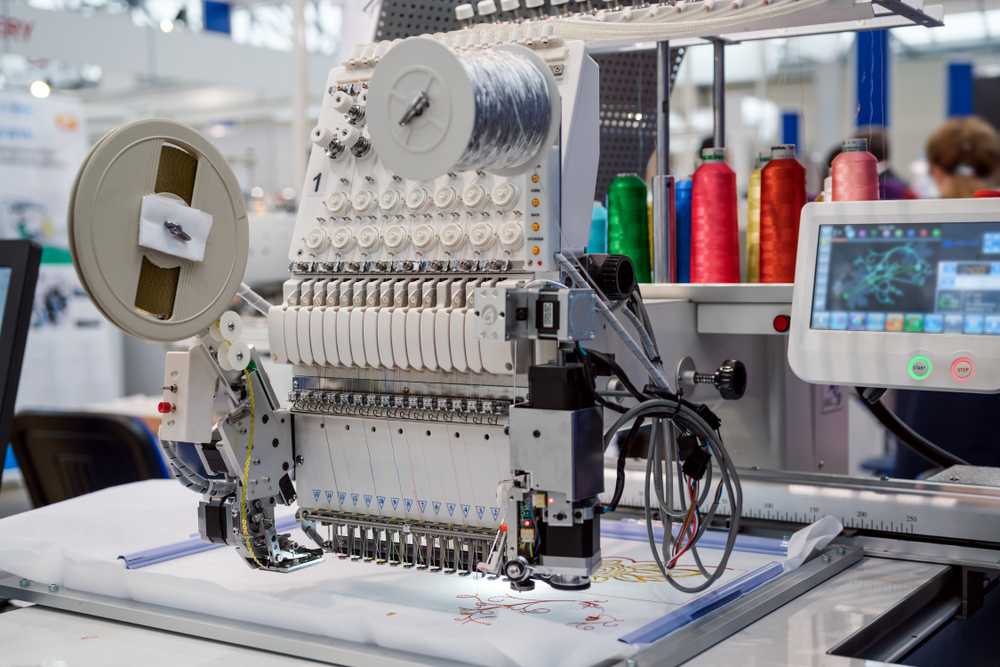Professional Digitizing for Embroidery: Fast and Reliable Service
Professional Digitizing for Embroidery: Fast and Reliable Service
Blog Article
Simplifying the Art of Embroidery Digitizing: Step-by-Step Overview
Needlework digitizing is a careful craft that demands accuracy and creativity. As technology remains to breakthrough, the digitization procedure has become more accessible, enabling lovers to bring their intricate layouts to life with convenience. In this guide, we will unwind the complexities of embroidery digitizing, damaging down each step methodically to simplify the process and encourage both novices and seasoned embroiderers alike. Keep tuned to find just how you can simplify this intricate art type and transform your imaginative visions into perfectly stitched work of arts.
Comprehending Needlework Digitizing Software
Needlework digitizing software program functions as a vital tool for changing intricate styles right into electronic formats compatible with needlework equipments, helping with specific stitching and customization. This customized software allows users to import different photo file styles, such as JPG or PNG, and transform them right into embroidery machine-readable formats like DST, EXP, or PES - Digitizing for Embroidery. By using functions like stitch editing, underlay choices, and string shade option, digitizing software allows individuals to control every element of the layout process
Furthermore, progressed needlework digitizing software application supplies devices for creating complicated styles, changing stitch thickness, and integrating complex details. Users can also preview the design prior to sewing it out, making certain precision and minimizing mistakes. Furthermore, many software application provide automatic attributes that aid simplify the digitizing procedure, saving time and effort.
Recognizing the capabilities of needlework digitizing software program is essential for attaining high-quality lead to needlework jobs. By grasping this device, needlework lovers and experts can unleash their creative thinking and bring complex styles to life with precision and performance.

Choosing the Right Style File
After familiarizing yourself with the capacities of needlework digitizing software application, the following critical action in the process is selecting the right layout declare your job. Digitizing for Embroidery. When selecting a design declare needlework digitizing, it's necessary to take into consideration the intricacy of the layout, the size of the final item, and the sort of material you will be collaborating with
For complex designs with great information, a high-resolution image or vector documents is advised to make sure that the embroidery equipment can precisely reproduce the layout. Furthermore, the size of the end product plays a considerable role in picking the best design data. Larger layouts may call for higher resolution documents to preserve clarity and intensity.
Additionally, the sort of material you will certainly be embroidering on affects the selection of design data. Various fabrics may need changes in the design documents to guarantee that the stitches are effectively lined up and the layout looks like intended. By meticulously choosing the ideal design file based on these elements, you can establish on your own up for a successful embroidery digitizing process.
Digitizing Tools and Strategies
Making use of specialized software and accuracy methods, digitizing devices are crucial in changing intricate designs into embroidery-ready data. Embroidery digitizing software application, such as Wilcom, Hatch, or Embrilliance, supplies the essential system to transform art work right into stitch information. These programs supply features like stitch editing, rug options, and text devices to make certain the layout converts seamlessly onto fabric.
One of the key techniques in digitizing is creating a clear course for the needlework equipment to adhere to. This involves digitizing each element of the design with accuracy, establishing stitch kinds, thickness, and directions. By utilizing tools like digitizing tablets or software-specific plugins, embroiderers can attain a high level of precision in their digitized designs.
Furthermore, mastering the art of underlay stitching is vital for creating high quality embroidery. Underlay stitching maintains the material and produces a foundation for the layout, making certain that the final product is both visually enticing and resilient. By comprehending these digitizing tools and strategies, why not try this out embroiderers can raise their craft and bring elaborate designs to life with accuracy and effectiveness.
Personalizing Stitch Types and Instructions
Having developed a foundation in digitizing tools and methods, an important aspect ahead of time needlework craftsmanship exists in customizing stitch types and instructions with accuracy and function. The option of stitch kinds can dramatically affect the total appearance and appearance of the embroidered layout. Satin stitches, understood for their smooth and glossy finish, job well for producing boundaries and text. On the various other hand, fill stitches are optimal for covering bigger areas successfully. By strategically integrating these stitch types, embroiderers can accomplish depth and dimension in their layouts.
Additionally, the instructions of stitches plays an essential function in improving the visual appeal of the final embroidery. By experimenting with various stitch angles and patterns, embroiderers can bring their designs to life with remarkable detail and details.
Screening and Refining Your Digitized Layout
To make certain the precision and top quality of your digitized layout, detailed screening and improvement are necessary actions in the embroidery digitizing process. Once you have actually finished the digitization of your layout, it is critical to examine it prior to proceeding with the actual needlework. Examining enables you to determine any possible concerns such as string breaks, stitch thickness troubles, or style distortions that may affect the outcome.

After testing, it is very important to refine your digitized layout based upon the feedback from the examination sew-out. This might involve tweaking stitch setups, readjusting thickness, or making modifications to the overall layout to attain the preferred outcome. By repeating via testing and refinement, you can tweak your digitized layout to perfection prior to relocating forward with the real embroidery procedure.
Final Thought
Finally, understanding the art of embroidery digitizing requires an extensive understanding of the software, picking the best design documents, using digitizing tools and strategies, tailoring stitch kinds and instructions, and testing and improving the digitized style. By following these actions, embroiderers can more information streamline the digitizing procedure and develop premium embroidered layouts with precision and performance.
Report this page